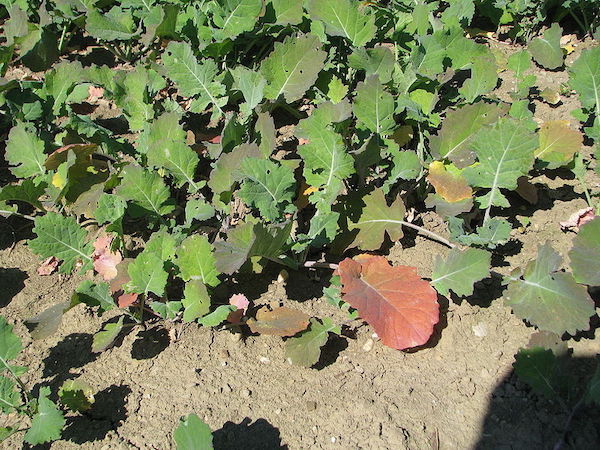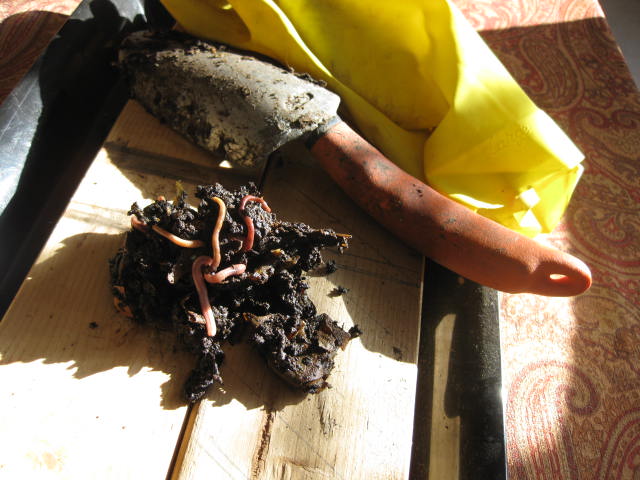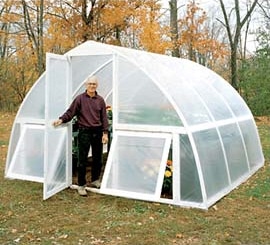Updated: November 11, 2020
For most gardeners, excitement over the garden starts to wane as summer comes to an end. The days grow shorter and we turn our attention to indoor activities.
While it’s true there are plenty of gardeners who keep growing through the winter, for many September signals that it’s time to begin preparing for next year.
As part of the process, one of the things you should accomplish by October (unless things are still growing) is covering the vegetable beds with cover crop or mulch.
Related: How to Grow Lettuce in the Fall
This is because letting them sit idle has several drawbacks that can impact future plantings and cause additional work in the spring. Winter covers can be a very helpful and easy way to protect and improve your soil.
Here are a few reasons why:
First of all, soil temperature plays a big part in a successful garden and the most important thing a cover does during the winter is keep the temperature constant through the snow and blistery weather.
Let’s take a sec to get the legal words out of the way. This article may contain affiliate links. That means if you click and buy from my partners, I will make a tiny amount of money at no cost to you. This in no way affects my recommendations.

Second, realize that the garden just worked hard for a good five to six months using up its nutrients. If the beds aren’t covered, weeds and other unwanted vegetation may grow. This will further deplete the soil’s nutrients and cause a big mess just in time for the spring.
You can put leaves and other organic to good use as mulch.
— Suburban Hobby Farmer
Finally, many gardeners plan to add chicken manure pellets or compost to the soil. If you leave beds uncovered, this will increase the chance of runoff of valuable soil additives and deplete the nutrients. Erosion also could damage the soil structure.
It’s for these reasons and more that I usually go with one of these two options to cover my vegetable beds for the winter months.
1. Cover crops
As I already mentioned, unwanted vegetation can be detrimental to the garden. On the other hand, cover crops actually benefit the soil during the off season.
They are very much worth planting.
Popular ones include winter rye, which increases the amount of organic matter in the soil, and legumes, which make more nitrogen available for your spring crops.
In most cases these crops are simply considered covers and not true crops since you don’t intend to harvest them. When spring arrives you will till them under.
When you do this, they will increase soil nutrients and organic matter.
2. Mulching
If cover crops aren’t an option, mulching is the next best thing. Mulch is a good protector of soil, helping to keep weeds down.
Like cover crops, mulch also adds nutrients and organic matter as it decomposes. A few ways to make your own mulch covers include:
Summer crops. Instead of cleaning the bed entirely from this summer’s plants, chop up leaves and branches and leave them in place to decompose.
Keeping some roots intact in the ground will help prevent erosion until the spring when you can till them under.

How to Improve Soil
All the ways I know to improve your soil.
One vegetable that is frequently left in the ground to decompose is corn.
Fall yard clean up. You can put leaves and other organic debris to good use as mulch in and around perennials, bushes, and especially in the garden beds.
Just avoid debris sprayed with chemicals or organic matter with a lot of weed seeds.
Leaves make great mulch cover, but can be highly acidic (depending on the type of tree). So when using leaves you may need to mix with other vegetation, or remove in the spring to make a leaf mold pile.
Saw dust. Local carpenters have lots of saw dust and wood shavings that you can use as mulch. Often, they’re willing to give them away.
But be careful that the mulch isn’t from treated wood that can leach harmful chemicals into your soil and ultimately your food.
Straw and hay. These terms can be used interchangeably, but the best option is straw that has already been threshed so it doesn’t spread weed seeds.
Black and white newspaper. It may not be pretty, but it works great and since today’s black and white inks are all soy based, there’s no worry of chemicals being absorbed by the ground or plants.
Related articles:
- Vegetable Plant Spacing for the Best Results
- Testing Garden Strategies
- Mulching Raised Garden Beds. Should You Do It?
Suburban Hobby Farmer is a participant in the Amazon Services LLC Associates Program, an affiliate advertising program designed to provide a means for sites to earn advertising fees by advertising and linking to amazon.com.
